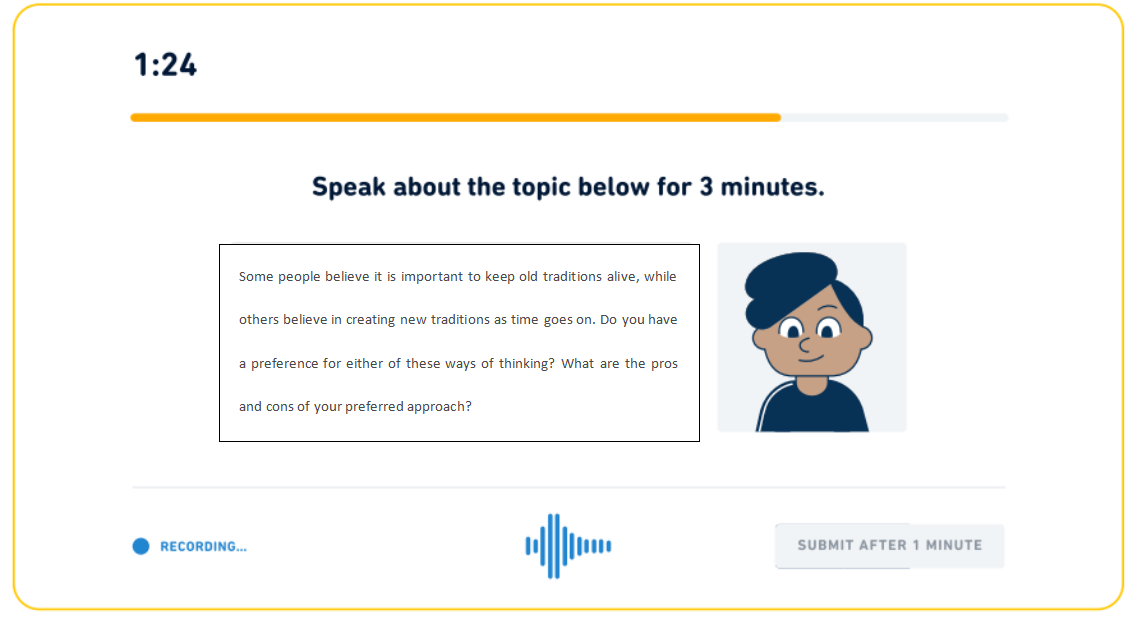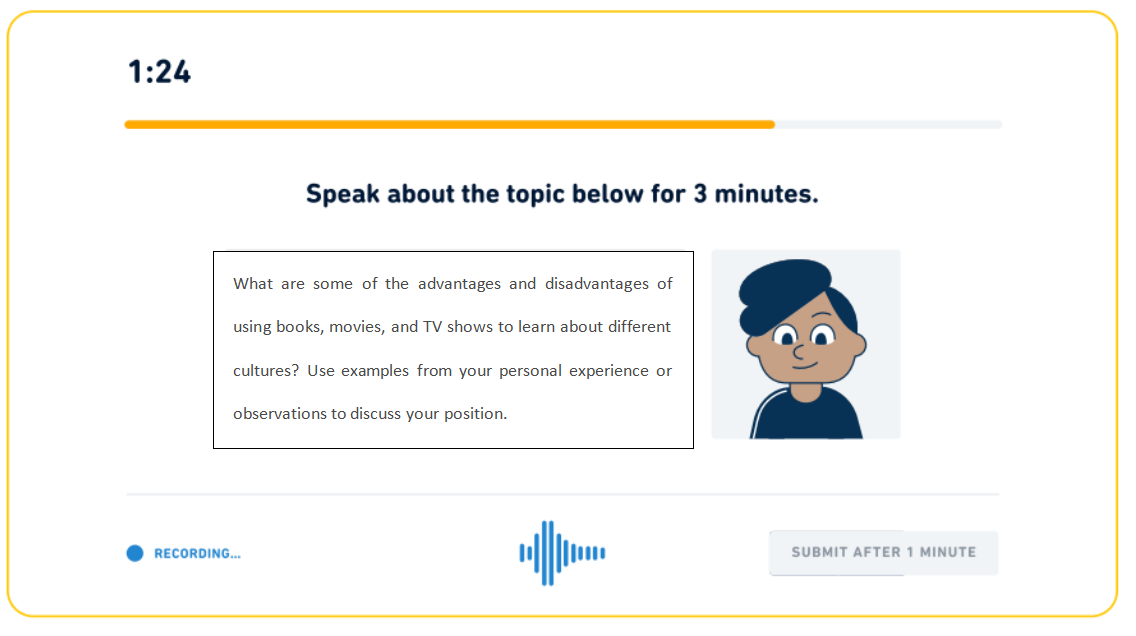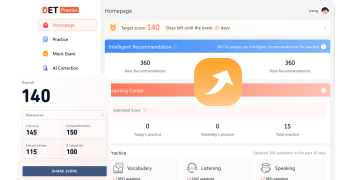Réponses aux questions de haute difficulté DET : 'Exemple de discours' (2024.10.24)
La section 'Échantillon de parole' du Test d'anglais Duolingo (DET) exige que les candidats expriment clairement leurs opinions sur un sujet donné en trois minutes. Cette section évalue la fluidité, l'exactitude, la prononciation, le vocabulaire et la cohérence des idées. Ici, nous partagerons des stratégies efficaces et des échantillons de réponses pour vous aider à exceller dans cette partie du test.

Stratégies pour obtenir un score élevé au DET Échantillon de parole
1. Comprendre le sujet et planifier rapidement
Avant de parler, prenez un moment pour bien comprendre le sujet et esquissez une brève structure. Un format « point, soutien, conclusion » fonctionne bien : commencez par votre idée principale, suivez avec des détails ou des exemples de soutien, et terminez par un bref résumé. Pour les réponses narratives, utilisez un ordre chronologique pour maintenir une réponse logique et facile à suivre.
2. Maintenir une structure claire et un flux logique
Une structure bien organisée et un flux logique aident votre auditeur à suivre votre réponse. Par exemple, lorsque vous êtes invité à «describe an interesting travel experience», organisez votre réponse en décrivant d'abord le lieu, les activités et les impressions dans l'ordre. Évitez de passer d'un point à l'autre ou de répéter des idées, car une réponse structurée est plus engageante et plus facile à suivre.
3. Utiliser un vocabulaire diversifié et minimiser les répétitions
Dans le temps imparti, essayez de montrer une gamme de vocabulaire, en utilisant particulièrement des verbes, des adjectifs et des mots descriptifs variés. Évitez de répéter des termes basiques comme « good » ou « interesting » et optez pour des synonymes ou des termes plus spécifiques comme « fascinating » ou « memorable » pour ajouter de la profondeur à votre réponse.
4. Assurez-vous de la fluidité et d'un rythme naturel
Gardez une vitesse de parole modérée, en évitant un discours trop lent ou de se précipiter par nervosité. Un rythme naturel montre la fluidité et de petites erreurs ne posent pas problème si elles n'interrompent pas le flux de votre réponse.
5. Pratiquer la prononciation et l'intonation
Une prononciation claire et une intonation naturelle sont essentielles pour obtenir un score élevé. Écouter régulièrement des locuteurs natifs et imiter leur prononciation et leur intonation, en particulier pour les mots-clés et les terminaisons de phrases, peut aider. Ajuster votre ton pour souligner vos points peut ajouter de la confiance à votre réponse et la rendre plus engageante.
Questions et Réponses d'Échantillons de Haute Difficulté
L'Échantillon de parole est une question de type objectif. Lors de l'approche de ce type de question, les candidats doivent adopter une approche flexible. Ci-dessous, vous trouverez deux réponses avancées. Si vous cherchez plus de pratique, n'hésitez pas à consulter la vidéo ci-dessous.
Question d'échantillon 1 :

Réponse d'échantillon :
That's an interesting question, and it really got me thinking. I believe there’s significant value in both preserving old traditions and creating new ones.
On one hand, keeping old traditions alive helps us connect with our roots and provides a deep sense of cultural identity. Celebrating holidays like Thanksgiving and Christmas not only brings families together but also fosters a collective sense of unity. Additionally, preserving these traditions allows us to learn from the wisdom and experiences of our ancestors, passing down valuable knowledge through generations.
On the other hand, creating new traditions is essential for adapting to our ever-evolving world. New traditions embrace change and offer exciting opportunities for self-expression and creativity, reflecting our modern values and circumstances.
In conclusion, I believe it’s crucial to strike a balance between preserving old traditions and creating new ones. This approach honors our heritage while allowing us to embrace change and progress in our lives.
Question d'échantillon 2 :

Réponse d'échantillon :
There are both positives and negatives to learning about different cultures through books, movies, and TV shows.
On one hand, these media can be a fantastic window into diverse worlds, offering snapshots of cultural practices and beliefs we might not otherwise encounter. For example, reading "Memoirs of a Geisha" provided an enthralling view of Geisha culture in Japan, almost like stepping into another universe.
However, these portrayals can also perpetuate stereotypes and offer skewed or overly romanticized views. Many Hollywood films depict foreign cultures through a narrow lens filled with clichés. You can’t truly understand a culture just by watching a movie.
Additionally, narratives often dominate from a Western perspective, which may not accurately reflect the experiences of people from different cultures.
In essence, while media can spark our interest in other cultures, it's vital to approach them critically and seek out diverse sources for a more holistic understanding.
Lectures complémentaires :
l Cours de préparation au DET : Questions d'échantillons de parole
(Un article sur un cours complet et des exercices sur les Échantillons de parole.)
(Un article sur le vocabulaire avancé pour les Échantillons d'écriture.)
l DET 5 Haut-Score Exemples Answers: 'Échantillon d'écriture' (2024.09.28)
(Un article sur Haut-Score Exemple Réponsess pour Écriture).






